Microwaves are one of the most convenient kitchen inventions of all time—fast, easy, and perfect for busy days. From reheating leftovers to defrosting meat, they’ve become an essential tool in households across the globe. But just because something can go in the microwave doesn’t mean it should. In fact, many everyday items that seem harmless can actually pose health risks, create dangerous conditions, or damage your microwave altogether.
You might think twice about microwaving foil or metal, but what about that leftover baked potato or your morning coffee in a plastic cup? Turns out, even seemingly microwave-safe items can release harmful chemicals, spark, or cook unevenly—potentially leaving behind bacteria or causing unexpected accidents. Some foods, like grapes or hard-boiled eggs, might even explode. Others, like processed meats or certain containers, can release compounds linked to health concerns when exposed to high heat.
And here’s the catch: most of us are guilty of zapping these items without a second thought. It’s easy to assume that if it fits and spins, it’s fair game. But food safety experts and appliance manufacturers alike have issued warnings about a number of common items we regularly toss in the microwave—some of which may surprise you.
So before you hit that “reheat” button again, take a moment to read this list. From food containers and snacks to beverages and pantry staples, these 15 items are best left out of the microwave. Whether the risk involves toxic chemicals, bacterial growth, or just a kitchen mess you’ll regret later, this list will help you avoid unnecessary hazards and keep your microwave (and your health) in good shape. Let’s take a closer look at what to skip—and why.
1. Leftover Potatoes

Those innocent-looking spuds sitting on your counter might be harboring a dangerous secret. Potatoes left at room temperature can develop Clostridium botulinum, the bacteria that causes botulism. Microwaving might seem like a quick fix, but the heat often isn’t distributed evenly enough to kill all the harmful bacteria.
The risk increases the longer potatoes sit out unrefrigerated. Even reheating refrigerated potato leftovers requires caution – make sure they reach at least 165°F throughout. Better yet, use conventional heating methods for more consistent temperatures.
When in doubt, toss potatoes that have been sitting out overnight. No quick meal is worth the risk of severe food poisoning that could land you in the hospital.
2. Whole Boiled Eggs

Microwaving a whole boiled egg creates a ticking time bomb in your kitchen. The rapid heating builds up steam pressure inside the sealed egg, with nowhere for that pressure to escape. The result? An explosive situation waiting to happen.
Many people have learned this lesson the hard way, ending up with egg shrapnel all over their microwave or worse – painful burns when the egg detonates upon being touched. The explosion can happen during heating or even after removal.
If you need to warm a boiled egg, slice it first to release pressure, or better yet, let it come to room temperature naturally. Your face, hands, and microwave will thank you for the extra patience.
3. Tomato Sauce
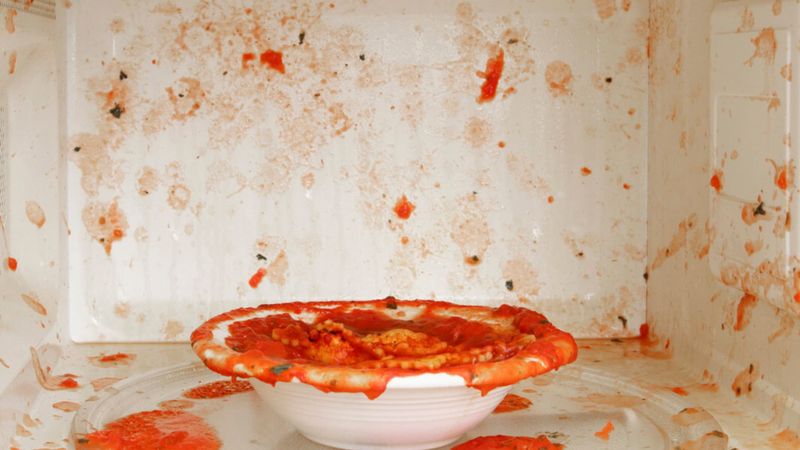
Red sauce looks innocent enough until it transforms into a volcanic eruption inside your microwave. The thick consistency of tomato sauce traps steam bubbles that violently burst when heated, sending scalding sauce in all directions. Anyone who’s cleaned spaghetti sauce off a microwave ceiling knows this messy truth.
The high water content combined with the viscous texture creates the perfect storm for splattering. The acidic nature of tomato sauce also makes it particularly stubborn to clean once it’s dried onto surfaces.
Always cover tomato sauce with a microwave-safe lid or paper towel, leaving a small vent for steam. Better yet, heat it slowly on the stovetop where you can stir regularly to prevent sauce volcanoes.
4. Aluminum Foil
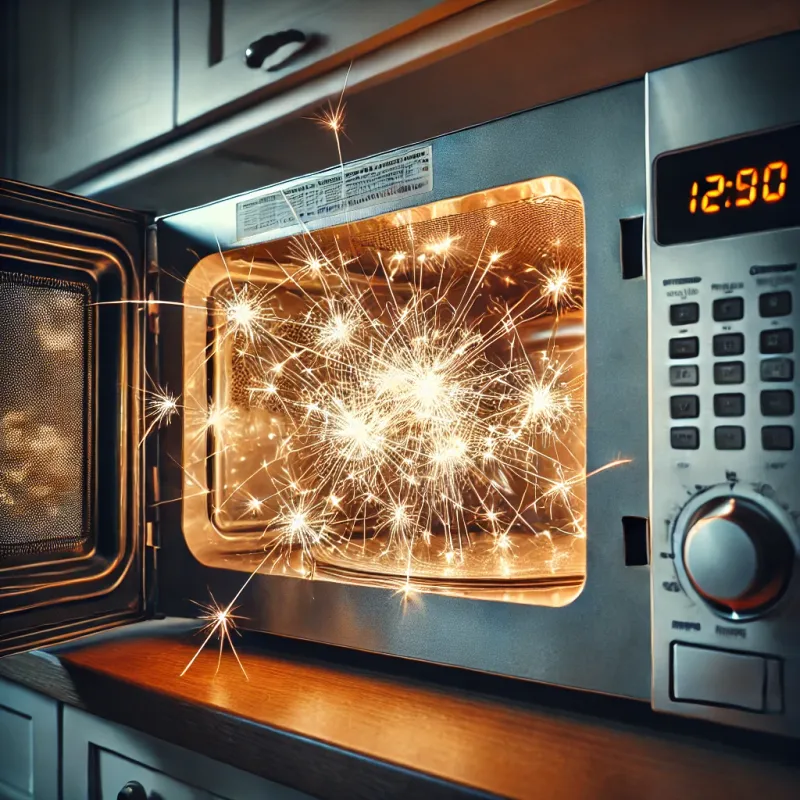
The metallic light show might look fascinating, but those sparks flying off aluminum foil in your microwave signal serious danger. Microwaves bounce off metal instead of passing through it, creating an electrical current that can jump as visible sparks.
This electric light display isn’t just pretty—it’s potentially catastrophic. The sparks can damage your microwave’s interior, create fire hazards, or even cause the appliance to short circuit completely. Small bits of foil on takeout containers can be especially sneaky culprits.
Always check containers for metal components before microwaving. Transfer food from foil containers to microwave-safe dishes, and save the foil for your oven or grill where it belongs.
5. Raw Peppers

Microwaving raw peppers, especially hot varieties like jalapeños or habaneros, can turn your kitchen into an impromptu tear gas chamber. The heating process releases capsaicin—the compound responsible for a pepper’s heat—into the air as a fine, irritating mist.
This airborne capsaicin can cause coughing fits, watery eyes, and burning sensations in your throat when you open the microwave door. The effect is similar to pepper spray, just less concentrated but still highly unpleasant.
If you must microwave peppers, cut them open first and cover them loosely. Better alternatives include roasting them in the oven or sautéing on the stovetop, which contains the capsaicin better and develops more flavor.
6. Non-Microwave Safe Plastic
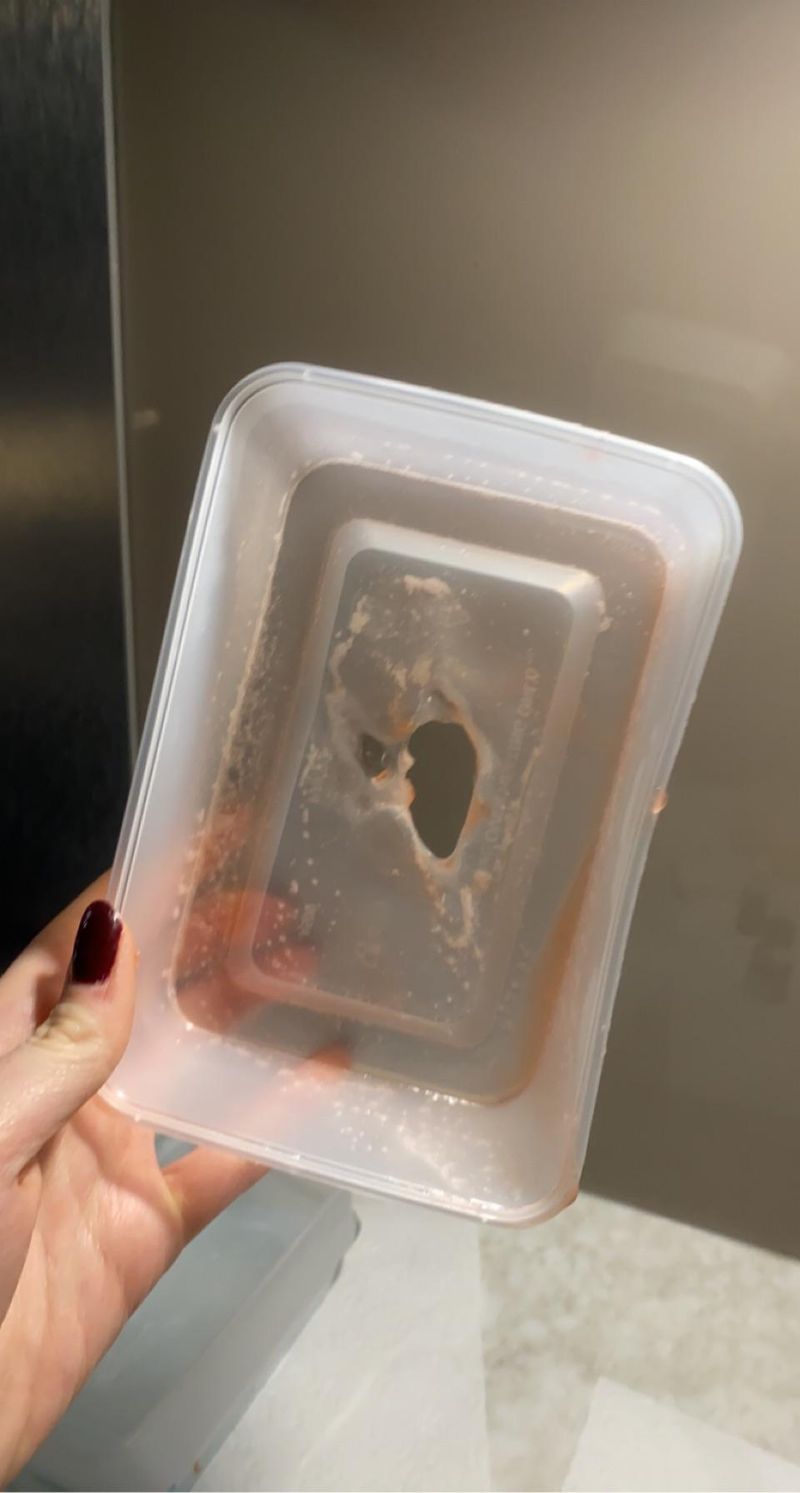
That yogurt container you’ve repurposed might seem handy for leftovers, but microwaving it could serve up a side of chemicals with your meal. Regular plastic containers can release harmful compounds like BPA and phthalates when heated, which may disrupt hormones and potentially cause other health issues.
The warping, melting, or strange smell from heated unsuitable plastics isn’t just unappetizing—it’s your clue that unwanted substances are migrating into your food. Even some plastics marketed as microwave-safe may break down after repeated use or prolonged heating.
Look for containers specifically labeled microwave-safe, or play it extra safe by transferring food to glass, ceramic, or microwave-specific plastic dishes before heating.
7. Whole Grapes
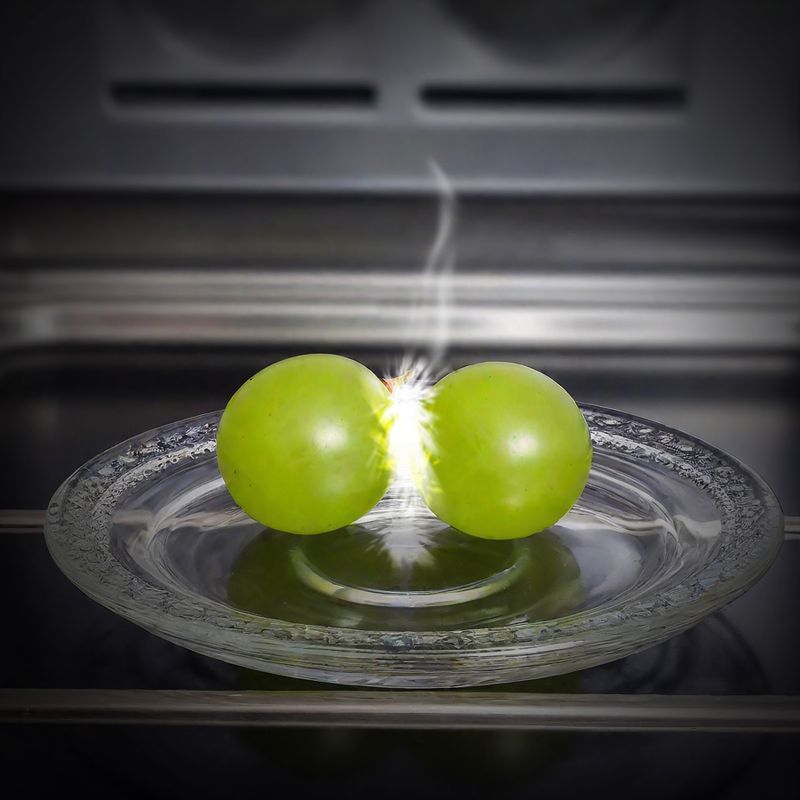
Seemingly harmless grapes can create a spectacular but dangerous plasma light show in your microwave. When microwaved, the water molecules inside grapes concentrate electromagnetic energy, especially where two grape halves touch, creating a glowing plasma that can reach temperatures hotter than the surface of the sun.
Scientists have actually studied this phenomenon, finding that the grapes act as efficient antennas for microwave radiation. While fascinating from a physics perspective, this mini lightning storm can severely damage your appliance.
The same effect occurs with other small round fruits like cherries or olives. Keep these fruits out of the microwave unless you’re conducting a supervised science experiment (preferably not with your kitchen microwave).
8. Metal Bowls and Utensils
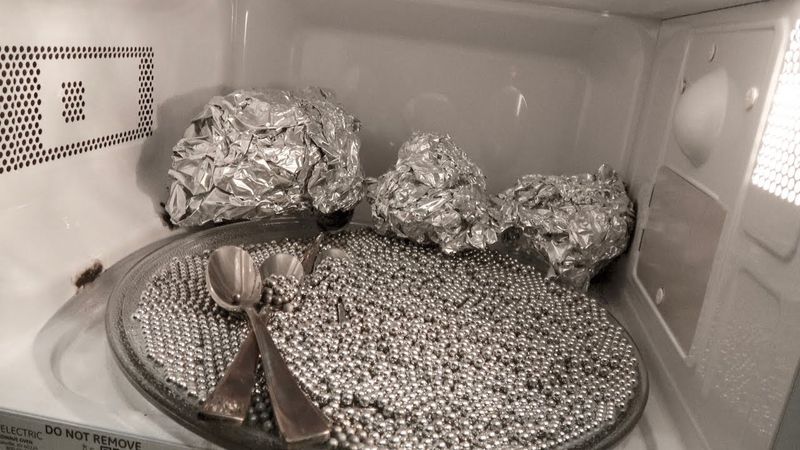
Grandma’s fancy silver spoon forgotten in your soup bowl can transform your microwave into a fireworks display. Metal reflects microwaves rather than absorbing them, creating electrical currents that jump between metal pieces or to the microwave walls, appearing as dangerous sparks.
Smooth, rounded metal pieces cause fewer problems than items with points or edges, which concentrate electrical charges. That’s why your metal spoon might spark at its tines or a fork becomes particularly hazardous.
Always check bowls for metallic trim or decorations before microwaving. Some older ceramic dishes contain metal flecks in their glaze that can cause similar issues. When in doubt, use glass or microwave-specific plastic containers instead.
9. Frozen Meat
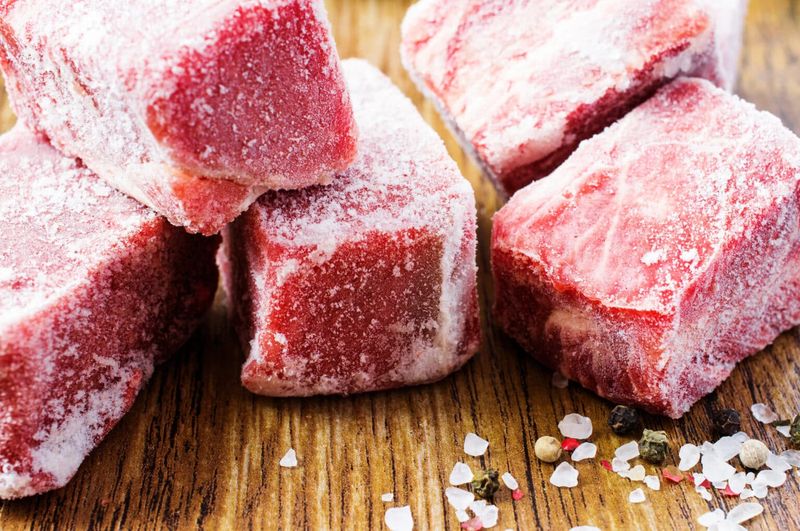
The hurried attempt to defrost tonight’s dinner might leave you with a strange culinary creation: meat that’s simultaneously overcooked on the edges and dangerously raw in the center. Microwaves penetrate only about an inch into frozen meat, creating uneven heating that can leave cold pockets where bacteria thrive.
This inconsistent heating creates food safety concerns that many home cooks don’t realize. The outer portions may reach bacteria-killing temperatures while the center remains in the “danger zone” perfect for bacterial growth.
Plan ahead by thawing meat in the refrigerator overnight. If you’re truly in a pinch, use your microwave’s defrost setting with frequent flipping, or the cold water method—submerging sealed meat in cold water, changing the water every 30 minutes.
10. Paper Bags and Cardboard
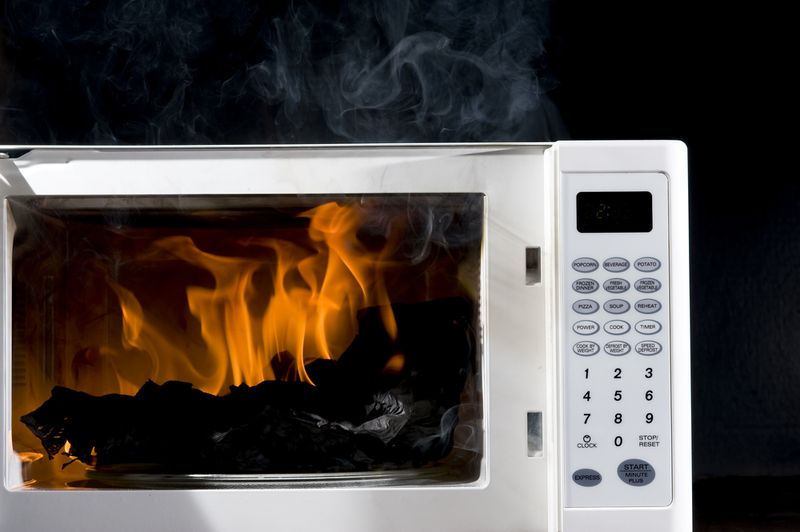
Brown paper lunch bags might seem microwave-friendly, but they’re actually fire hazards waiting to happen. Unlike specially designed microwave popcorn bags, regular paper bags contain recycled materials and chemicals that can ignite when heated, potentially causing flames inside your appliance.
The glue used in many cardboard containers presents similar risks. When these adhesives heat up, they can release unpleasant odors and potentially harmful fumes into your food. Cardboard with metallic components, like some take-out containers, compounds the danger.
Always transfer food from paper or cardboard packaging to microwave-safe dishes. For popcorn, use only commercial microwave popcorn bags or special microwave popcorn makers designed for safe heating.
11. Styrofoam Containers
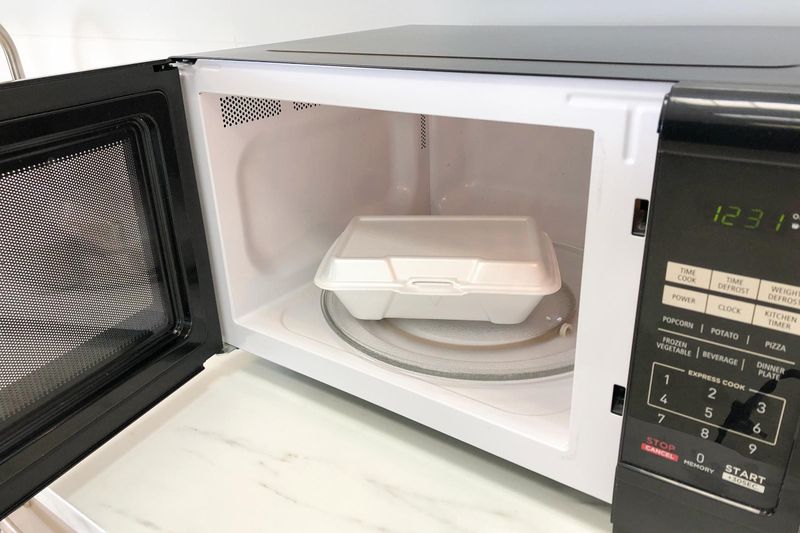
The convenience of heating leftovers right in their takeout container comes with a hidden cost when that container is made of styrofoam. This material can break down under microwave heat, potentially releasing styrene and other chemicals into your food.
Watch for telltale signs of trouble: warping, melting edges, or oily-looking spots on the container surface. Some newer styrofoam products claim to be microwave-safe, but many food safety experts still recommend caution, especially with fatty foods that can accelerate chemical leaching.
Play it safe by transferring food to glass, ceramic, or microwave-approved containers. The extra dirty dish is worth avoiding the chemical soup that might otherwise accompany your meal.
12. Breast Milk or Formula
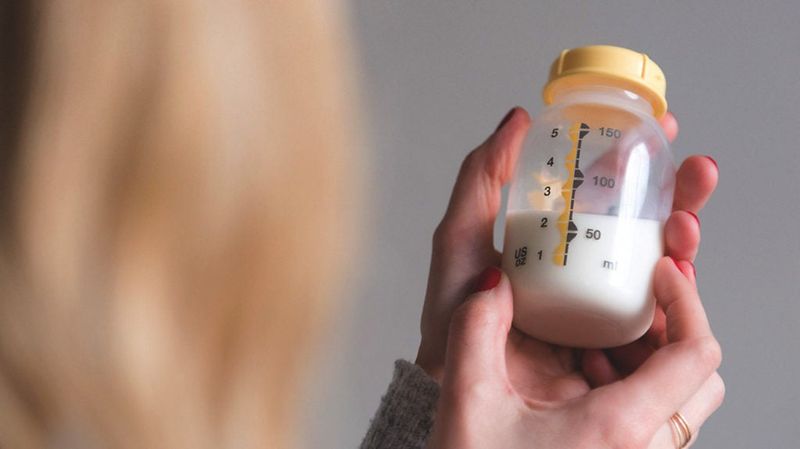
A crying hungry baby creates pressure to warm milk quickly, but microwaving breast milk or formula is never worth the risk. The uneven heating creates dangerous hot spots that can severely burn a baby’s sensitive mouth and throat, even when the bottle feels just right to your touch.
Beyond safety concerns, microwaving breast milk destroys valuable antibodies and nutrients that help protect your baby from illness. The high heat breaks down these delicate immune-boosting components that make breast milk so beneficial.
Instead, warm bottles by placing them in a bowl of warm water for a few minutes. Always test the temperature by shaking the bottle and placing a few drops on your inner wrist—it should feel neutral, neither hot nor cold.
13. Processed Meats
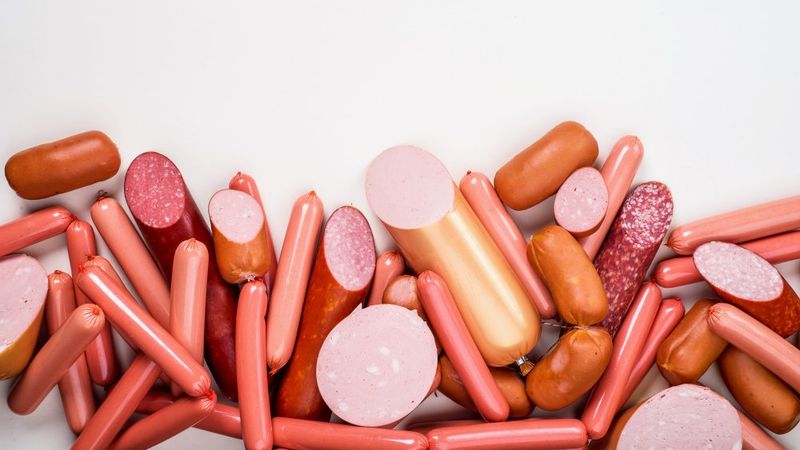
Those convenient pre-cooked sausages or hot dogs might seem like perfect microwave candidates, but zapping processed meats can create concerning chemical changes. Studies suggest that microwaving these products can accelerate the formation of cholesterol oxidation products (COPs), compounds linked to coronary heart disease.
The high fat content in many processed meats becomes particularly problematic when microwaved. The rapid, intense heating can cause fat molecules to break down in ways that don’t typically occur with conventional cooking methods.
When reheating hot dogs, sausages, or deli meats, consider stovetop methods instead. If you must use the microwave, cover the meat and use a lower power setting to heat them more gently and evenly.
14. Fresh Bread

The promise of warm, soft bread from the microwave quickly turns into disappointment when you bite into a chewy, rubbery disappointment. Microwaves heat by exciting water molecules, which means they essentially steam bread from the inside out, destroying its delicate texture.
The rapid heating causes moisture to evaporate unevenly, leaving some parts tough while others become soggy. Fresh bread’s complex structure, carefully created during baking, simply can’t withstand this treatment. Within seconds, a once-perfect loaf transforms into something barely recognizable.
For truly delicious warm bread, wrap it in foil and heat in a conventional oven at 350°F for about 10 minutes. Toasting individual slices also preserves much more texture and flavor than microwaving.
15. Empty Microwave
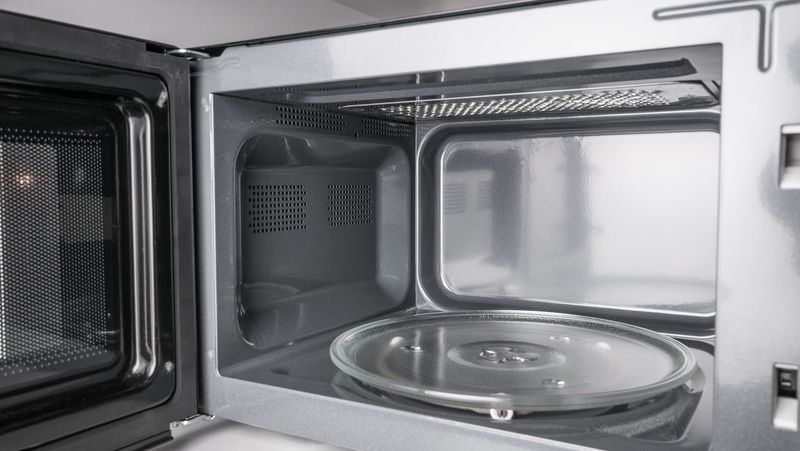
Running your microwave while it’s completely empty might seem harmless—after all, there’s nothing inside to burn or explode. However, this common mistake can severely damage your appliance or even render it completely useless.
Microwaves work by producing energy that’s absorbed by food. Without food to absorb this energy, the waves bounce around inside the cavity and reflect back into the magnetron (the component that generates the microwaves). This reflection can overheat and damage this essential part.
If you need to test your microwave or run it briefly, place a microwave-safe cup of water inside. This gives the energy somewhere to go and protects your appliance from unnecessary wear and potentially expensive repairs.
Leave a comment